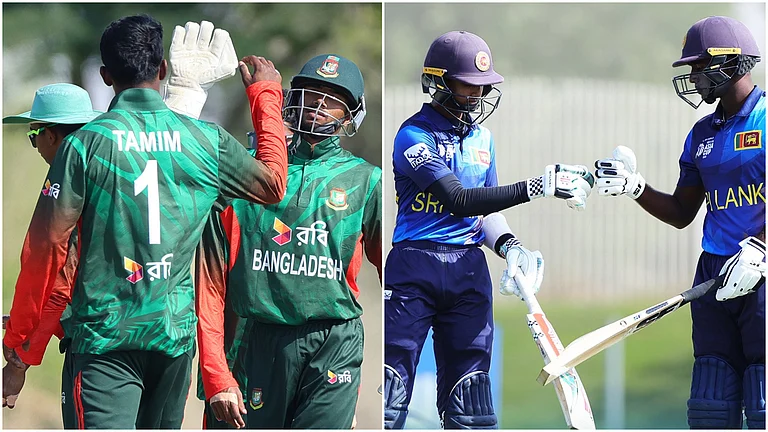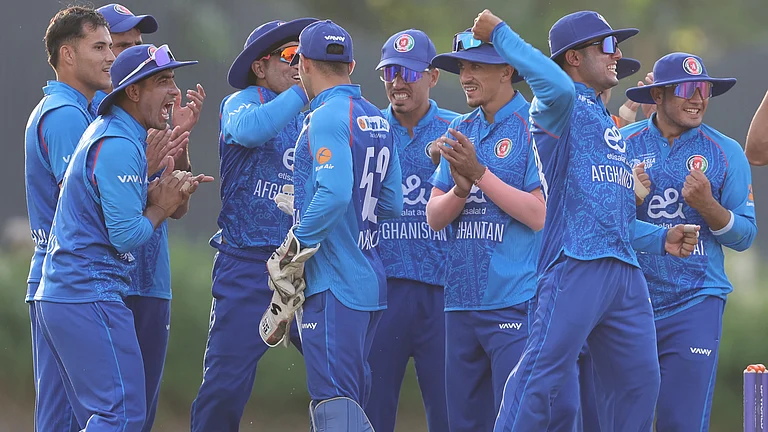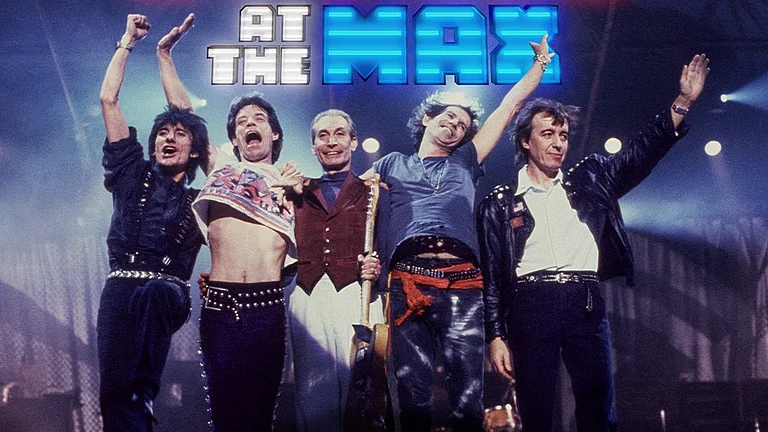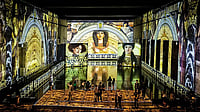
| Sharada Devi temple icons in Maihar |
Located atop the Trikuta hill, which can now be reached via a ropeway, the temple has been a frequent signpost in the rich stock of Hindu myth and lore. The Pandavas passed this way in the Dwapar Yug, while on exile, en route from Prayag in the north—Maihar was then called Mahidhar. The place was a stopover for Lord Rama too on his way during vanvaas to Panchvati. The well-travelled Adi Shankaracharya is also said to have offered prayers here.
Maihar has a whole templescape of big and small shrines, each claiming to be more ‘pracheen’ than the other, and each boasting an exclusive legend to bolster this claim to antiquity. All of them, however, remain sideshows to the centrepiece of the small, picturesque town. Traffic is constant at Ma Sharada’s temple, but the highest number of devotees visit on New Year’s Day, according to the officials of the samiti, a local body comprising government officials and members of the civil society which looks after the running of the temple.
The story goes that Dakshraj, father of Sati, Shiva’s wife in the mortal world, organised a sabha especially to ridicule his son-in-law’s bohemian ways and the company of vagabonds he kept. Unable to bear the insults being heaped upon her husband in absentia, Sati fainted. Shiva meanwhile heard about the shindig, and presuming Sati to be dead, carried her body over his shoulder and broke into the tandava, his dance of destruction. Seeing the cosmic carnage this unleashed, the other two of the trinity—Brahma and Vishnu—decided to intervene before he destroyed the Earth and all creation. To contain the rampaging Shiva, Vishnu released the ultimate weapon, the sudarshana chakra, to release Sati’s body from him. Wherever the pieces of her body fell—52 in all—a peeth-sthan of the Shakti came up. In Maihar, it was the Sati’s breast which fell. According to another legend, it was her garland or haar that fell, hence the name Mai-har.
The world of puranas apart, the place has equal underpinnings in medieval folklore, notably that of Aalha-Udal, the valorous Rajput duo of the 11th century who fought the armies of Prithviraj Chauhan in a titanic struggle that cost Udal, the younger of the brothers, his life. They are said to have installed the deity on the hilltop and are still believed to hold the first rights to make an offering to Ma Sharada. Ballads of Aalha’s valour—who spared Prithiviraj’s life, despite the latter killing his brother—are sung all across Bundelkhand even today. There is even an Aalha-Udal akhara at the base of the hill, where the brothers are supposed to have wrestled once.

Baba Alauddin’s grandson Rajesh outside Medina Mahal. (Photograph by Bishwadeep Moitra)
Maihar’s greatest modern son, however, would have to be Baba Alauddin Khan, the musical genius who lived to be a 110—born just five years after the Sepoy Mutiny, he almost lived to see the Emergency, living till 1972. But longevity was the least of the accomplishments of this mountain of a man who best imbibed the gifts of the goddess of learning, and whose devotee he remained for a lifetime. He wasn’t born in Maihar, though. He had run away as a young boy from Tripura, then in East Bengal, and landed in Calcutta. The sarod was his chosen instrument, but he could play all instruments with ease, and was soon a regular presence at the bhadralok soirees in Bengal. It was, however, at a mehfil in Lucknow that he caught the attention of the Maharaja of Maihar, who promptly invited him to be his court musician.
The maharaja’s patronage and Alauddin Khan’s virtuosity led to the birth of one of the most influential schools of Hindustani classical music—the Maihar Seniya gharana. Over the years, the world would discover India through the music of the Maihar gharana, and the ustad himself would mould two of its glittering gems—his own son, the sarod legend Ustad Ali Akbar Khan, and sitar genius Pandit Ravi Shankar. There was a third gem, too, the one that the world never got to hear, Alauddin’s daughter Annapoorna Devi, who the cognoscenti say was the best of the three. Other luminaries came to him too, among them sitarist Nikhil Banerjee, flautist Pannalal Ghosh and violinist V.G. Jog.

Baba Alauddin
Medina Mahal, the house where Baba lived and where history was created on the thaaps of the tabla, the jods of the sitar and the jhalas of the sarod, esraj and surbahaar, stands as a living shrine in the centre of town. This is where the ustad fashioned the unique nal-tarang, an instrument he crafted by shearing off the muzzles of the guns of Maihar’s palace guards. Today, Medina Mahal houses the mausoleums of Baba Alauddin and his son Ali Akbar, overseen by a trust headed by Rajesh Ali Akbar Khan, a grandson of Baba Alauddin’s.
A tour inside the haveli takes you to the terrace where the great master did riyaaz every morning. What you are unprepared for is what is directly in the line of sight here—the Sharada Devi Temple! The rooms where Ali Akbar Khan and Ravi Shankar lived and did sadhana under the guru’s eyes are also here, as is the chowki on which Baba would sit and give Annapoorna Devi sitar lessons.

Baba Alauddin’s music room today
Legend has it that every time Baba would immerse himself in his sangeet sadhana, a lady in a white sari with a red border would walk through the courtyard up to the terrace. It was Ma Sharada herself come to hear Baba play, his mother would say. Figures like Baba Alauddin, who occupy a sort of cusp in history bridging the traditional world and the modern, often attract tales like these; it does not behove us to merely disbelieve.
The national highway that connects Maihar with the Jabalpur airport is 170-km-long, but unmotorable. The state highway, on the other hand, is a 260 km of bumpless tarmac. The two contrasting highways are explanation itself of why the BJP swept to power in the assembly elections in the state. Raju Awasthi hitches a ride with me on the way back—Umaria is on my return route. “What if you still don’t pass your Class 12 boards?” I rib him. “Ma Sharada will bless me in a different way then,” he replies, nary a doubt in his mind.


























